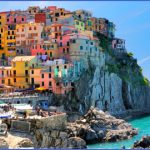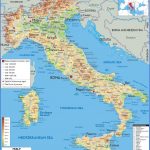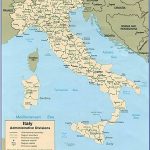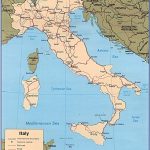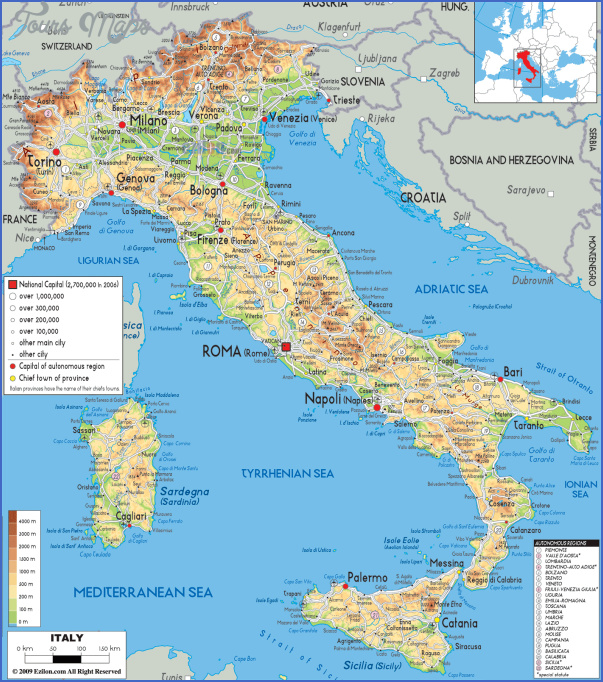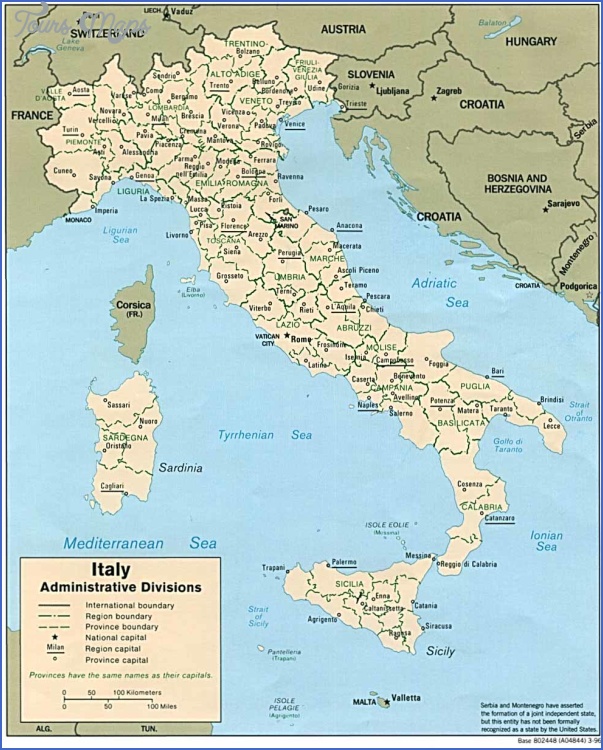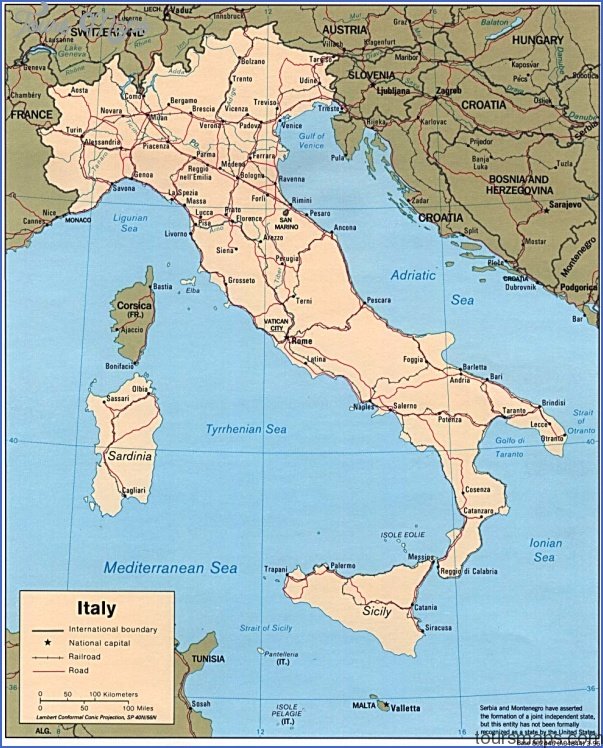One of the few countries whose very geography seems active it resembles a boot poised to kick Sicily clear across the Mediterranean Italy has never been inclined to sit back quietly. After bursting onstage as the base for the ambitious Roman empire, it became persecutor and popularizer of an upstart religion called Christianity and later served as center to the artistic and philosophical Renaissance. Today it has emerged as a world power that has changed governments more than 50 times since World War II. Countless invasions have left the land rich with examples of nearly every artistic era; Egyptian obelisks, Etruscan huts, Greek temples, Augustan arches, Byzantine mosaics, Renaissance palazzi, Baroque fountains, and postmodern superstructures sprawl across its 20 regions. From perfect pasta to the creation of pizza, Italy knows that the quickest way to a country’s happiness is through its stomach. Italy is also the champion of romance passionate lovers shout their amore from the rooftops of southern Italy and Venice. Somewhere between the leisurely gondola rides and the frenetic nightclubs, you too will fall in love with Italy.
BEFORE YOU WERE BORN. Although archaeological excavations at Isemia date the earliest inhabitants of Italy to the Paleolithic Era (100,000-70,000 BC), things didn’t get swinging until around 1200 BC, when legendary Aeneas led his tribe from the ruins of Troy to the Tiber valley, settling down to rule the city of Alba Longa. In 753 BC, two of Aeneas’s descendants, the fratricidal twins Romulus and Remus, founded Rome. Tyranny ruled for centuries until Lucius Brutus expelled the Tar-
Spend the next day admiring the fine art in the Capitollne Museums and the Galleria Borghese, then satiate your other senses in a disco. Redeem your debauched soul in Vatican City, gazing at the ceiling of the Sistine Chapel, gaping at St. Peter’s Cathedral and enjoying the Vatican Museums.
ONE WEEK Spend 3 days taking in the sights in Rome before heading north to Florence (2 days; 710) to immerse yourself in Italy’s amazing Renaissance art at the Uffizi Gallery. Move to Venice (2
BEST OF ITALY IN 3 WEEKS Begin in Rome (3 days), Cheer on horses in Siena (1 day; 725) then move to Florence (3 days). Move up the coast to Finale Ligure (1 day; 676), and the beautiful Cinque Terre (2 days; 678). Head to cosmopolitan Milan (2 days; 662) and visit Lake Como for hiking (1 day; 672). Find your Romeo or Juliet in Verona (1 day; 706). Spend time in Venice (2 days) before flying south to Naples (2 days; 731); be sure to visit preserved, ancient Pompe(1 day; 738). Then hike and swim along the Amalfi Coast (1 day; 740), and see the Grotto Azzura on the island of Capri (1 day; 741).
A string of military victories brought near total unification of the Italian peninsula in 396 BC, and victory in the later Punic Wars spread the Pax Romana (Eoman peace) throughout the Mediterranean. Internal conflict set the stage for Julius Caesar to name himself dictator, which lasted all of a year before his assassination on the Ides (15th) of March, 44 BC. Power eluded many would-be successors, like Brutus and Mark Antony. In 31 BC, Octavian, Caesar’s adopted heir, a cold and calculating politician, emerged victorious, and had assumed the title of Augustus by 27 BC. The Empire made a hobby of Christian persecution until Constantine’s Edict of Milan declared Christianity the state religion in AD 313. The fall finally came in 476, ushering in the Dark Ages while the East continued to thrive as the Byzantine Empire.
DEATH AND RESURRECTION. The Black Death and the struggle between mon- archs and the Papacy dominated the period aptly called the Dark Ages. The fall of Rome had taken its toll on the region, but the 14th century saw a cultural revival unlike any before or since. Fueled by the rediscovery of Greek and Latin texts, the Renaissance exposed Italians to the Classical conception of education (rhetoric, grammar, and logic) as the monopoly on knowledge held by the medieval church gradually eroded. Those who had survived the Black Death found themselves in a seller’s market and profited from the labor shortage, producing the first merchant middle class. The exalted Medici family in Florence rose from obscurity, boasting a pope, a couple of cardinals, and a queen or two. Power in Florence was consolidated under Cosimo and Lorenzo (il Magnifico), who broadened the family’s activities from banking and warring to the patronization of the arts. They engaged in a high-stakes battle with Pope Julius II to bring Michelangelo to Florence, and would have won if it weren’t for that little matter of the Sistine Chapel.
TO THE VICTOR GO THE SPOILS. The 16th to 18th centuries were Italy’s punishment for enjoying herself too much during the Renaissance. Weakened by internal conflict, Italy fell to Spanish conquerors. The Spanish Inquisition sought to suppress the Protestant Reformation and stamp out all the independent thinkers that the humanist movement had created a century before. In the course of Napoleon’s 19th-century march through Europe, the diminutive French Emperor united much of northern Italy into the Italian Republic, conquered Naples, and fostered national sovereignty. In 1804, Napoleon declared himself the monarch of the newly united Kingdom of Italy. After Napoleon’s fall in 1815, the Congress of Vienna carved up Italy, ceding control to Austria.
TOGETHER AGAIN. Reaction against the arbitrary divisions of Italy culminated in the nationalist Risorgimento, a unification movement in 1870. This bit of history is something visitors to Italy cannot afford to ignore; the three primary leaders in the movement, Giuseppe Mazzini, Giuseppe Garibaldi, and Camillo Cavour, have a namesake boulevard in nearly every city. Once the elation of uni-fication wore off, however, age-old provincial differences reasserted themselves. The North wanted to protect its money from the needs of the agrarian South, and cities were wary of surrendering power to a central administration. The Pope, who had lost power to the kingdom, threatened Catholics who participated in politics with excommunication. Disillusionment increased as Italy became involved in World War I, paving the way for the rise of Fascism under the control of Benito Mussolini, II Duce, who promised order and stability for the young nation. Mussolini established the world’s first Fascist regime in 1924 and expelled all opposition parties. As Mussolini initiated domestic develop-ment programs and aggressive foreign policy, support for the Fascist leader ran from intense loyalty to increasing discontent. In 1940, Italy entered World War II on the side of its Axis ally, Germany. Success came quickly but was
short-lived; the Allies landed in Sicily in 1943, prompting Mussolini’s fall from power. As a final indignity, he and his mistress were captured and executed by infuriated citizens, their naked bodies left hanging upside down in the public square. By the end of 1943, Italy had formally withdrawn its support from Germany. The Nazis responded by promptly invading their former ally. In 1945, Italy was freed from German domination, and the country was divided between those supporting the monarchy and those favoring a return to Fascism.
POST-WAR POLITICS AND RECOVERY. The end of WWII did little but highlight the intense factionalism of the Italian peninsula. The Constitution, adopted in 1948, established the Republic, with a caesar, an augustus, and a committee of warring landlords or, a president, a prime minister (the chief officer), a bicameral parliament, and an independent judiciary. The Christian Democratic Party (DC), bolstered by Marshall Plan money and American military aid (as well as rumored Mafia collusion), soon overtook the Socialist Party (PSI) as the primary player in the government of the new Republic, as prominent members of the PSI were found to be sleeping with the fishes. Over 300 parties fought for supremacy; none could claim a majority, so they formed tenuous party coalitions. Italy has changed governments 58 times since WWII, none of which has lasted longer than four years.
Italian economic recovery began with 1950s industrialization skylines of northern cities were quickly dotted with Fiat and Lamborghini billboards and factory smokestacks, along with old cathedral spires and large glowing crucifixes. Despite the Southern Development Fund, which was established to build roads, construct schools, and finance industries, the South has lagged behind. Italy’s economic inequality has contributed to much of the regional strife that persists today.
Economic success gave way to late-1960s unrest. The autunno caldo (hot autumn) of 1969, a season of strikes, demonstrations, and riots (mainly by university students and factory workers) foreshadowed 1970s violence. Perhaps the most shocking episode was the 1978 kidnapping and murder of ex-Prime Minister Aldo Moro by a group of left-wing militant terrorists, the Brigate Rosse (Red Brigade). Some positive reforms, however, accompanied the horror of the 1970s: divorce was legalized and rights for women expanded. The events of the 1970s had challenged the conservative Social Democrats, however, and Bettino Craxi became Italy’s first Socialist premier in 1983.
CORRUPTION AND REFORM. It’s no secret that Italian government officials have never been adverse to a little grease on their palms. Yet Oscar Luigi Scalfaro, elected in 1992, only realized the extent of this when he noticed that his secretary owned a Mercedes and wore a ‚20,000 diamond-studded Cartier watch. Shortly thereafter, in the mani pulite (clean hands) campaign, Scalfaro and Judge Antonio di Pietro managed to uncover the Tangentopoli (Kickback City) scandal. This unprecedented political crisis implicated over 2600 politicians and businessmen in corruption charges. Reactions to the investigation have included the May 1993 bombing of the Uffizi (Florence’s premier art museum), the suicides of 10 indicted officials, and the murders of anti-Mafia judges and investigators. The elections of 1996 brought the center-left coalition, the Olive Tree (l’Ulivo), to power, with Romano Prodi, a Bolognese professor, economist, and non-politician, as Prime Minister. Prodi helped stabilize Italian politics. For the first time in modem history, Italy was dominated by two stable coalitions: the center-left l’Ulivo and the center-right II Polo. Despite high hopes, his coalition lost a vote of confidence in October 1998; by the end of the month, his government collapsed, and former Communist Massimo D’Alema was sworn in as prime minister. D’Alema and Carlo Ciampi created fiscal reforms and pushed a blood and tears budget that qualified Italy for entrance into the European Monetary Union (EMU) in January 1999.
ITALY Photo Gallery
Maybe You Like Them Too
- Explore Nevestino, Bulgaria with this Detailed Map
- Explore Pulau Sebang Malaysia with this Detailed Map
- Explore Southgate, Michigan with this detailed map
- Explore Les Accates, France with this Detailed Map
- Explore Góra Kalwaria, Poland with this detailed map

